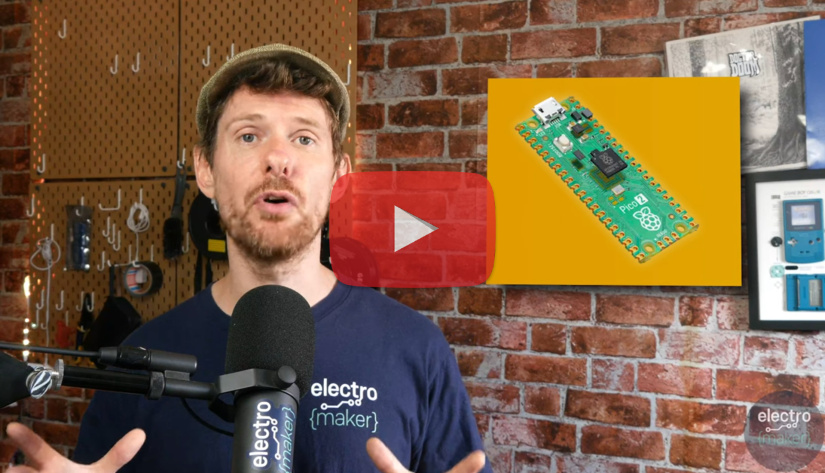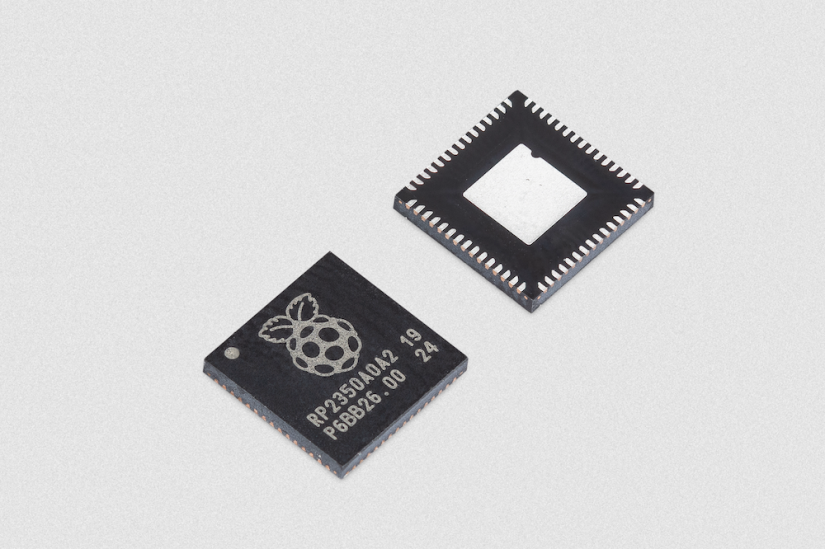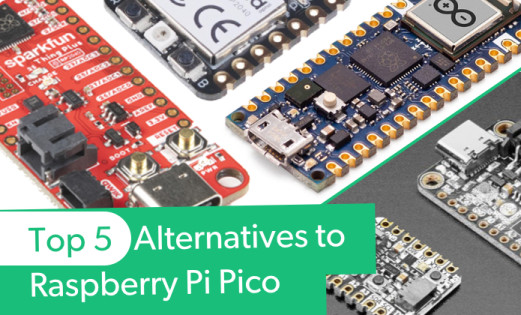Raspberry Pi Pico 2: Key Upgrades and Practical Compatibility
The Raspberry Pi Pico 2 has garnered significant attention with its recent launch, primarily due to the introduction of the powerful new RP2350 chip. Ian was eager to explore the capabilities of this upgraded microcontroller, which offers a substantial leap in performance and features. Despite these advancements, the Raspberry Pi Foundation has maintained its commitment to affordability, pricing the Pico 2 at just $5. This strategic pricing ensures that the Pico 2 remains accessible to a wide range of users, from hobbyists to professionals, continuing the legacy of the original Raspberry Pi Pico.

Watch Ian talk about the Raspberry Pi Pico 2 and RP2350 in this episode of The Electromaker Show
Key Upgrades in the RP2350 Chip
The RP2350 chip in the Raspberry Pi Pico 2 marks a significant upgrade from its predecessor, the RP240. One of the most notable changes is the shift from the ARM Cortex M0+ to the more advanced ARM Cortex M33. This new core not only boosts processing speed, running at 150 MHz compared to the previous 133 MHz, but it also incorporates enhanced security features such as the ARM TrustZone, making it suitable for more secure applications.

In addition to the ARM Cortex M33, the RP2350 introduces dual Hazard 3 RISC-V cores. These cores provide an exciting opportunity for developers who are interested in pushing the boundaries of microcontroller capabilities. With the flexibility to switch between ARM and RISC-V cores depending on the application, developers can experiment with cutting-edge technology while maintaining compatibility with existing ARM-based code.
Other hardware improvements in the RP2350 include a substantial increase in on-chip SRAM, providing more memory for complex applications. The chip also features additional Programmable I/O (PIO) state machines, increasing from 8 to 12, which enhances the versatility of peripheral control. Furthermore, improvements in power efficiency, as highlighted in Jeff Geerling’s blog, make the RP2350 a more attractive option for energy-conscious projects.
Practical Implications and Compatibility
One of the key strengths of the Raspberry Pi Pico 2 is its pin compatibility with the original Pico. This design choice ensures that the Pico 2 can be easily integrated into existing projects without requiring significant hardware changes. For developers who have already built custom PCBs or setups with the original Pico, the Pico 2 offers a seamless drop-in replacement, simplifying the upgrade process.
In terms of software, the Pico 2’s SDK has been designed to maintain code compatibility across different cores. Whether you’re working with the ARM Cortex M33 or the dual Hazard 3 RISC-V cores, the SDK allows for easy migration with minimal code adjustments. This flexibility is particularly beneficial for developers who want to explore the new RISC-V cores without overhauling their existing ARM-based projects.
Additionally, the RP2350 chip brings enhancements such as increased Analog-to-Digital Converter (ADC) channels and additional Pulse Width Modulation (PWM) outputs. These improvements expand the chip's capabilities, making it even more versatile for advanced projects that require precise analog readings or sophisticated motor control.
Did you enjoy this article?
Make sure you subscribe to The Electromaker Show for similar content and subscribe to our monthly newsletter!












































Leave your feedback...